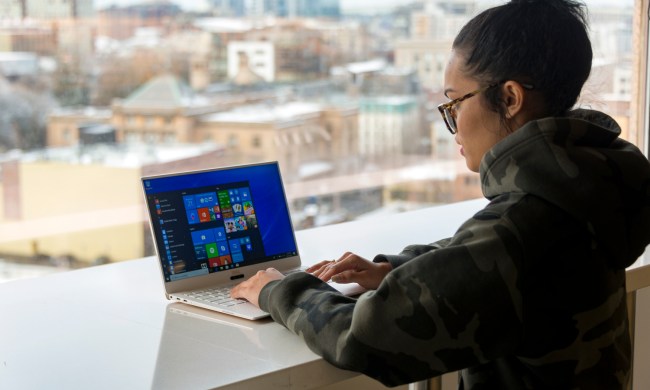The icon which installs the Windows 10 app and allows you to upgrade is a small Windows picture located in your System Tray at the lower right corner of your screen. For many people this icon has popped up automatically (some people are even trying to get rid of it). Others, however, don’t see it at all.
If your little icon is missing, don’t worry – you can probably still download Windows 10. You just need to get your computer ready with a few preparatory updates. Here’s what you need to do and what important circumstances you should watch for.

Windows 7
If you are running Windows 7, then you need to update, update, update. It’s easy to switch from Windows 7 to Windows 10, but your operating system needs to be ready. If that little icon isn’t popping up for you, then you are using an older version of Windows 7 that is simply not equipped to handle a new OS without some intermediary updates to show it the way.
This is probably because you have your Automatic Updates turned off. Head over to the Control Panel, click on System and then choose Automatic Updates. You can also manually choose to update absolutely everything. Leave no update box unchecked. When your computer is through, reboot and you should see the icon to get the Windows 10 upgrade.
Note to Enterprise users: The icon only works for Windows 7 SP1, which is the version that all those updates are giving you. There are some versions of 7, namely Windows 7 Enterprise, where you simply cannot get the update yet.
If you really don’t want to update everything on a compatible computer, or the update doesn’t seem to be working, things just became much more complex. You’re going to have to pick and choose the right updates manually.
First, download the necessary updates. This includes the update here (3035583) and here (2952664). Without these updates, Windows 7 isn’t equipped to handle the Windows 10 installation app.
Then download the app itself. There’s a great post by Microsoft support engineer Yaqub K on this very issue that shows you what to do. You will need to copy the recommend text and paste it into Notepad, then save it under a specific file name that you can then use in a command prompt. Follow the steps carefully, wait for around 30 minutes, then you should be able to reboot and have the app ready.
Windows 8 (and 8.1)

Again, the trick here is to upgrade your operating system. If you do not use automatic updating, you will need to go over to Settings, select Change PC Settings, and then choosing Update and Recovery. This will allow you to do a full update across the board and reboot your PC, after which the Windows 10 icon should appear fresh and happy in your system tray. This menu also lets you choose to expand your automatic updates under the Choose how updates get installed tab.
Note to Enterprise and RT users: As with Windows 7, Windows 8 does come with some caveats. If you have Windows 8/8.1 Enterprise, or Windows RT/RT 8.1, you won’t be able to get the Windows 10 Update icon or app to appear on your own. Sit tight and wait for Microsoft.
Additionally, if you want to go the manual route and download the right updates and nothing more, then you will still have to does some extra work. The steps are similar to cherry-picking on Windows 7.
First you will need two downloads, this one here (2976978) and here (3035583). This will prepare your operating to accept the entire framework for getting your Windows 10 upgrade app.
Again, this handy post is very useful for the next step. Paste the big block of text into Notepad and save it as indicated. Then you will have to run the code via Command Prompt. Only do this after completing the first two updates in step one.
Computers on a professional network
If you use your computer on a professional network, then getting the update app may be out of your hands. Schools and business organizations run networks with pretty tight firewalls in place. Updates are typically managed via administration or IT departments so that nothing gets through that isn’t supposed to.
In these cases, your organization probably has a plan to eventually convert to Windows 10 (hopefully). As we don’t need to tell you, these rollout plans can take a long time. Meanwhile, there’s little you can do except ask IT how it’s going and maybe give them some doughnuts, because their job is hard.
Older Windows operating systems

If you picked up on the “no update for you” sections of our Windows 7 and Windows 8 guides, then you probably noticed that older computers and certain operating systems cannot download the Windows 10 update app, period. Microsoft has determined that these computers and operating systems just can’t handle Windows 10.
If everything seems to be going right and you still can’t get that elusive little icon, then you may want to check the ah, pedigree of your operating system. If you downloaded a hack or illegal copy of a Windows OS, you cannot access the update app.



